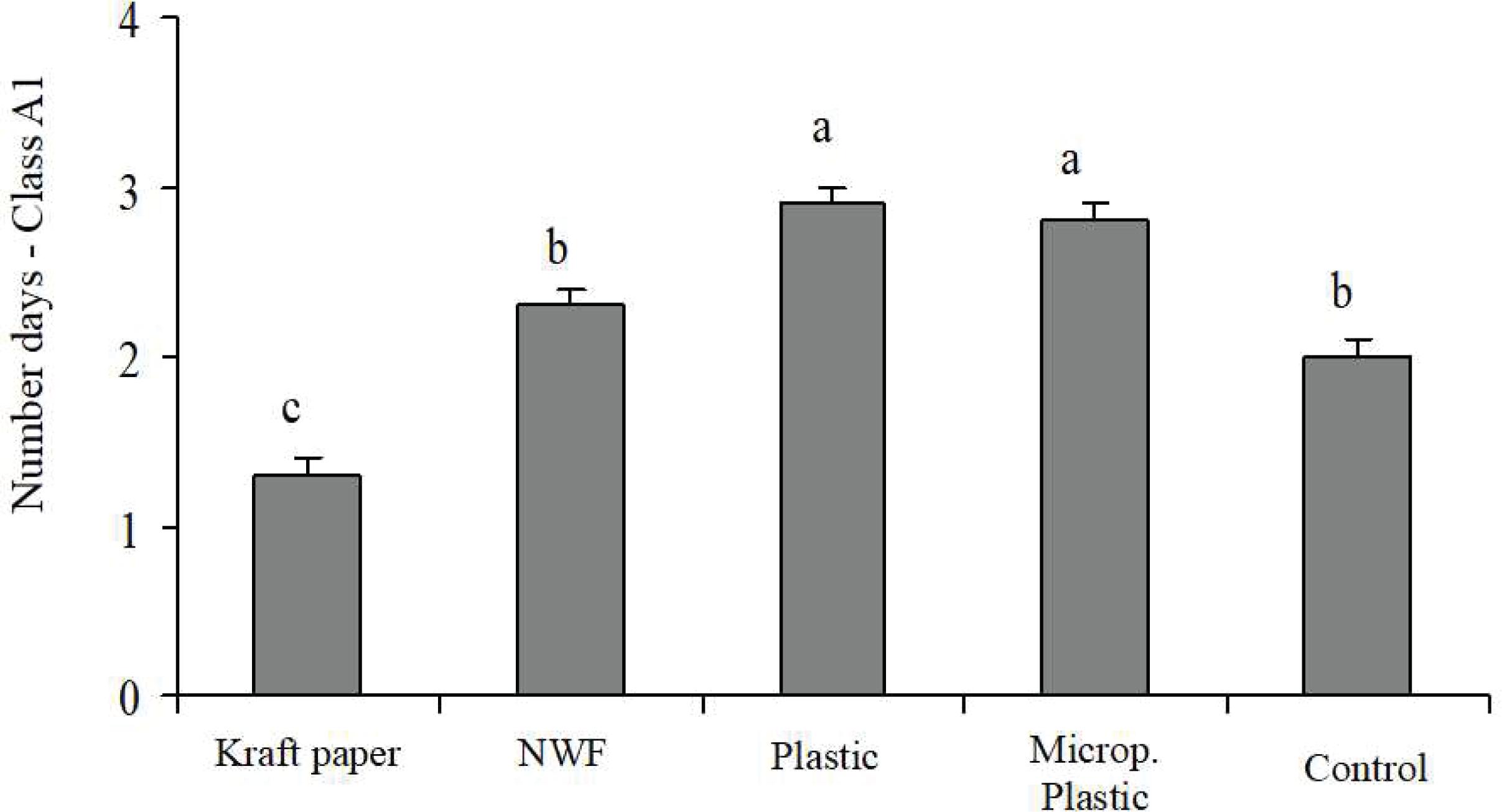ABSTRACT
Stingless bee Trigona spinipes (Hymenoptera: Apidae) is an important pest of calla lily, Zantedeschia aethiopica (L.), damaging flowers, especially the spadix. The aim was to identify the most efficient packaging for bagging calla lily inflorescences, aiming to protect against the attack of stingless bee and to maintain postharvest quality. The experiment was carried out in a calla lily plantation cultivated in soil under 50% shading screen. Treatments consisted in bagging calla lily flowers with: 1) brown kraft paper bag, 2) non-woven fabric (NWF) bag; 3) transparent plastic bag, 4) transparent micro-perforated plastic bag and 5) control (without bagging). The experimental design was completely randomized with 25 replicates and one inflorescence per plot. Inflorescences received treatments when they presented definitive color, but still with completely closed spathe. Seven days after bagging, inflorescences were collected and evaluated for damages caused by insects in the field and the postharvest characteristics. Postharvest quality evaluations of inflorescences were performed for 12 days, observing expansion of the spathe in length and width, stem weight and visual quality expressed by the number of days that remained in each class. The bagging of calla lily inflorescences was efficient in the control of stingless bee, regardless of packaging used, because under these conditions, no inflorescence presented damage. In control, 84% of damaged inflorescences were observed. Differences in postharvest characteristics were observed and inflorescences remained for longer periods in the process of spathe opening, which is characterized by the measurement of their length and width, when packed. Among packages, NWF allowed longer spathe length at the 6th day of evaluation, larger width at 7th day of evaluation and less fresh mass loss at the end of the experiment (8%). In control, reduction of spathe measurements from the first day of evaluation and loss of 11% of fresh mass were observed. It was concluded that NWF is an efficient packaging to protect calla lily against the attack of stingless bee without compromising the postharvest quality of inflorescences.
Keywords:
Zantedeschia aethiopica; alternative control of pests; floriculture; pest management




